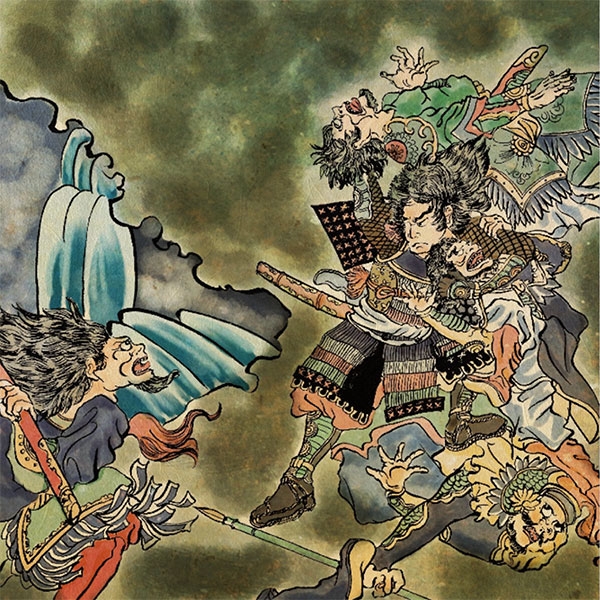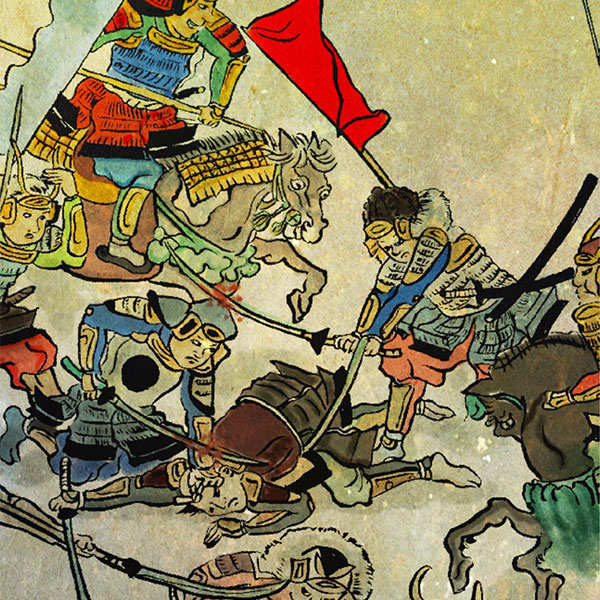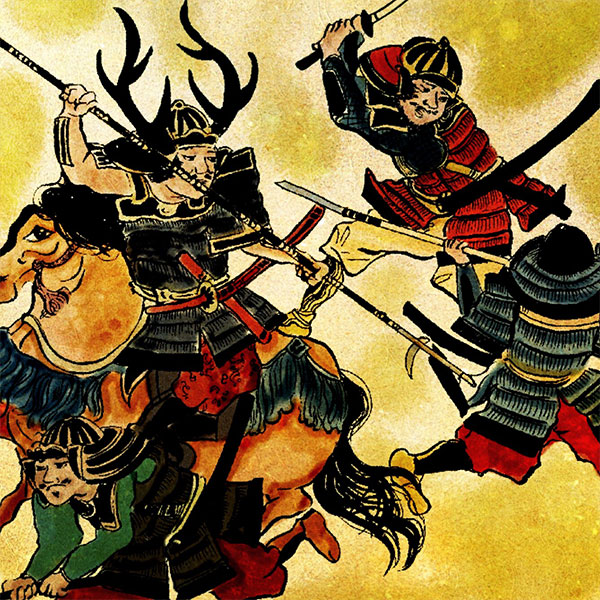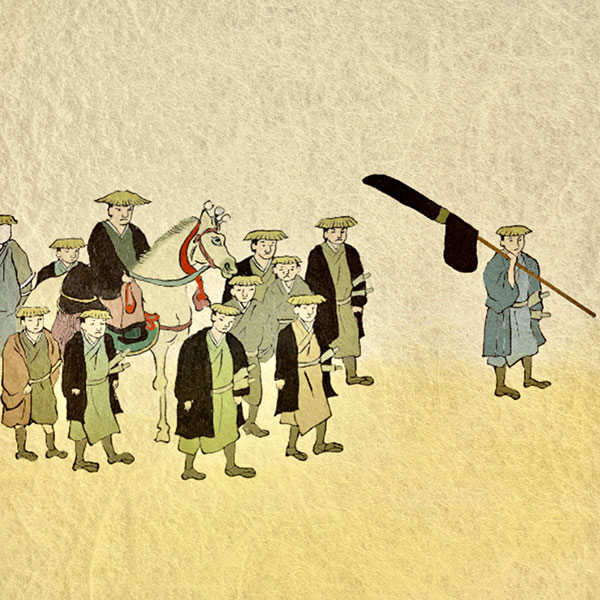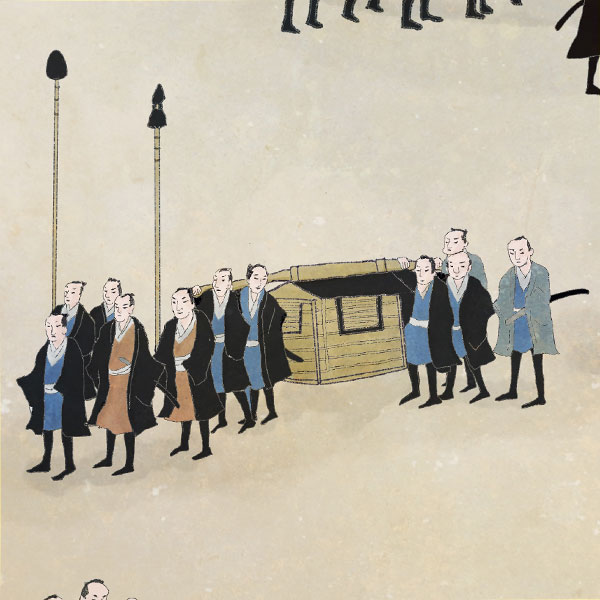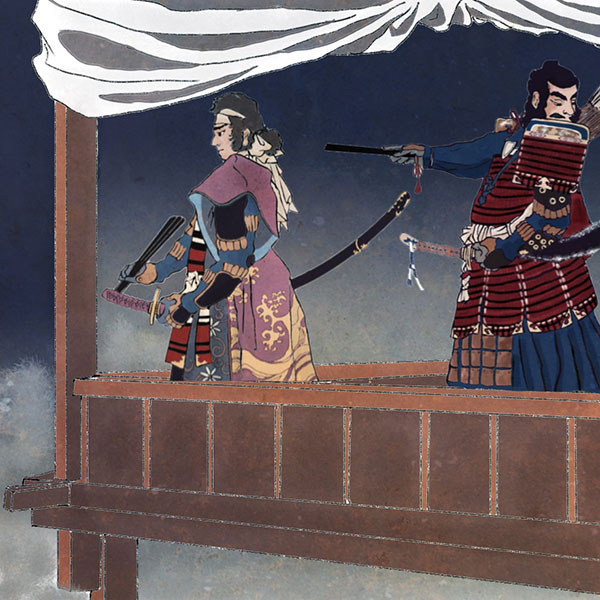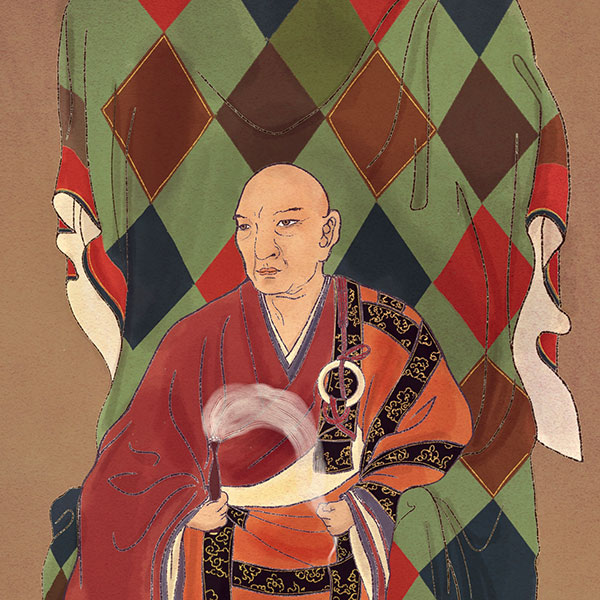Hidetada Tokugawa (2/2)Second Shogun of the Edo Shogunate
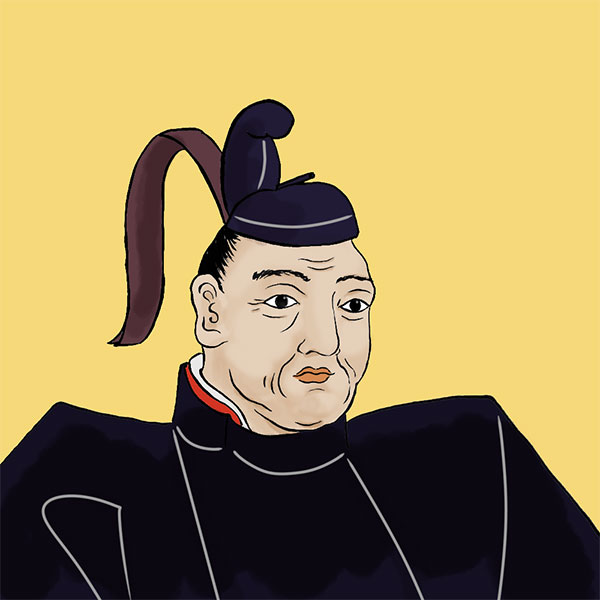
Tokugawa Hidetada
- Article category
- biography
- name
- Tokugawa Hidetada (1579-1632)
- place of birth
- Shizuoka Prefecture
- Related castles

Hamamatsu Castle

Edo castle

Osaka Castle
- related incident
Hidetada ruled the Tokugawa family's direct control territories and the Fudai daimyo, while Ieyasu was in charge of negotiations with the Tozama daimyo.
Hidetada, who became the head of a samurai family through his appointment as shogun, sought to increase his own military power. Hidetada established the Shoinban as part of the Imperial Guard in 10th year of the Keicho era, the same year as his appointment as shogun, and established the Kosho-gumi in the following year, strengthening his own military power.
After Ieyasu moved to Sunpu Castle in the 12th year of the Keicho era, Sadakatsu Matsudaira entered Fushimi Castle as castle lord, while Daiban under Hidetada and Fudai daimyo from the Kanto region took turns guarding the castle, and it became Hidetada's castle. . In the same year, Ieyasu arrived in Edo and gave Hidetada 30,000 pieces of gold and 13,000 pieces of silver.
Next, from the winter of Keicho 13 to the spring of the following year, he inspected the daimyo and hatamoto of the Kanto region. In Leap February of Keicho 15, after becoming Shogun, Hidetada, who mostly stayed in Kanto and Edo except for going to Sunpu, where Ieyasu had retired, held a large-scale makigari in Tahara, Mikawa Province, with Toshikatsu Doi and Naotaka Ii as generals. going.
After confirming that Hidetada's military power was in place, Ieyasu proceeded to transfer finances to Hidetada.
From 16th year of Keicho era, the annual tax from Kamigata that had been paid to Sunpu was changed to be paid to Edo, and in the following year, many of the Tenryo in various countries were changed to pay annual tax to Edo.
Hidetada's strengthening of power was also reflected in the changes in his vassals.
Yasumasa Sakakibara, who had already retired from political affairs, passed away in 1996, the year after he became Shogun, and the Kanto General Magistrates, Tadanari Aoyama and Kiyonari Naito, were accused of allowing the people of the territory to set up bird nets and bird cages in Ieyasu's hunting grounds. Hidetada, angered by Ieyasu, dismissed both men. Masanobu Honda, also the general magistrate, slipped to roju, and the post of Kanto general magistrate disappeared. In the 19th year of the Keicho era, Tadachika Okubo was replaced, and with the exception of Masanobu, the old vassals left major positions in the Edo government, and Hidetada's close vassals came to occupy these positions.
Osaka no Jin
On March 9, 1987, he became Udaijin (Minister of the Right) and overtook Toyotomi Hideyori in official rank. During the Hoko-ji bell incident, Hidetada frequently dispatched his close vassals to Ieyasu and kept in close contact with him, and like Ieyasu, Hidetada also expressed anger towards the Toyotomi family. Afterwards, when the Winter Siege broke out in Osaka, Tokatsu was dispatched to Ieyasu, who was about to go to war, and requested that Ieyasu take care of him while he was away in Kanto since he was going to the front.
Hidetada departed from Edo on October 23rd, marched quickly, and arrived at Nagahara, Omi Province (Nagahara, Yasu City, Shiga Prefecture) on November 7th, where he stayed for several days until his rear army caught up with him.
In the subsequent siege of the castle, he insisted on a forceful attack as the commander-in-chief, but was not relented, and after the peace peace, he also took on-site command of filling in the moat.
During the Summer Siege in 1615, the main shrine was threatened by Harufusa Ohno, a senior vassal of the Toyotomi family. After the fall of the Toyotomi clan, he worked together with Ieyasu to establish various laws for samurai families, Kinchuan, court nobles, etc.
When Ieyasu became ill on the night of January 21, 1616, a messenger conveyed the news to Edo within 12 hours, and Hidetada left Edo on February 1 and arrived at Sunpu the next day. stayed in Sunpu until Ieyasu's death on April 17th, and attended to his father's death. After visiting Mt. Kunos where he was buried on the 22nd, he returned to Edo on the 24th.
Politics and final moments after Ieyasu's death
In the same year that Ieyasu died, in connection with the ban on Christianity, foreign ships other than Chinese merchant ships were limited to Hirado and Nagasaki.
On May 26, 1967, Hidetada issued black seals and red seals to various feudal lords, and in the same year, he issued letters of relief to temples and shrines. Also in this year, Hidetada led his troops to Kyoto and visited the temple on July 21st. During this visit to Kyoto, Hidetada transferred the feudal lords around the Kinai area, had interviews with Koreans and Portuguese people, secured possession of temples and shrines around the Kinai area, and began intervening in the Imperial Court, the feudal lords of the western regions, and temples and shrines that had been carried out by Ieyasu up until then. indicated that it would take over.
In the 5th year of Genwa, Hidetada returned to Kyoto and visited not only Fushimi and Kyoto but also Osaka, Amagasaki, and Yamatokoriyama. At this time, he ordered the large-scale movement of various feudal lords, including the change of Masanori Fukushima, the conversion of Osaka into a feudal lord, the construction of Osaka Castle, and the destruction of Fushimi Castle, and the transfer of Yorinobu Tokugawa from Sunpu to Kii. .
Particularly during the period before Ieyasu's death, Fudai daimyo remained in the Kinai region and east, but starting with the transfer of Tadamasa Ishikawa to the Bungo-Hita domain, Tadamasa Honda to the Himeji domain in Harima, and Honda to the Tatsuno domain. Masatomo transferred Tadazane Ogasawara to the Akashi domain and Katsunari Mizuno to the Bingo Fukuyama domain, and began establishing Fudai daimyos in the Saigoku region west of the Kinai region. On June 18, 1966, his daughter Kazuko entered the court of Emperor Gomizunoo as the Chugu. On September 6th, Hidetada's two sons, Takechiyo and Kunimatsu, celebrated Genpuku together and took the names Iemitsu and Tadanaga.
In January 1997, he secretly ordered the feudal lords to send their wives and children to live in Edo, and also sent hostages of their major retainers to Edo.
When he went to Kyoto in 1623 and visited the shrine on June 25, he handed over the post of shogun to his eldest son, Iemitsu. Following in the footsteps of his father, Ieyasu, he did not relinquish real power even after his retirement and practiced dual politics as a powerful figure. At first, he seemed to have thought of taking up government affairs at Odawara Castle, following in the footsteps of Ieyasu who retired to Sunpu, but in the end he moved to the Nishinomaru area of Edo Castle.
From October 25th to 30th, 1626, when the Emperor visited Nijo Castle, Hidetada and Iemitsu came to Kyoto and received an audience. The Shii Incident in 1629 demonstrated thorough control of the imperial court and temples and shrines, and on September 12, 1630, his grandson Onna Ichinomiya ascended the throne (Emperor Meisho), and Hidetada became Emperor. became a maternal relative of
In 1631, he commandeered Tadanaga's territory and ordered him to live in seclusion, but his health began to deteriorate around this time and he passed away on January 24, 1632 (March 14, 1632). He passed away at the age of 54 (died at the age of 52).
Reread the article on Hidetada Tokugawa
- related incident

- WriterTomoyo Hazuki(Writer)I have loved history and geography since my student days, and have enjoyed visiting historical sites, temples and shrines, and researching ancient documents. He is especially strong in medieval Japanese history and European history in world history, and has read a wide range of things, including primary sources and historical entertainment novels. There are so many favorite military commanders and castles that I can't name them, but I especially like Hisashi Matsunaga and Mitsuhide Akechi, and when it comes to castles, I like Hikone Castle and Fushimi Castle. Once you start talking about the lives of warlords and the history of castles, there's a side of you that can't stop talking about them.





